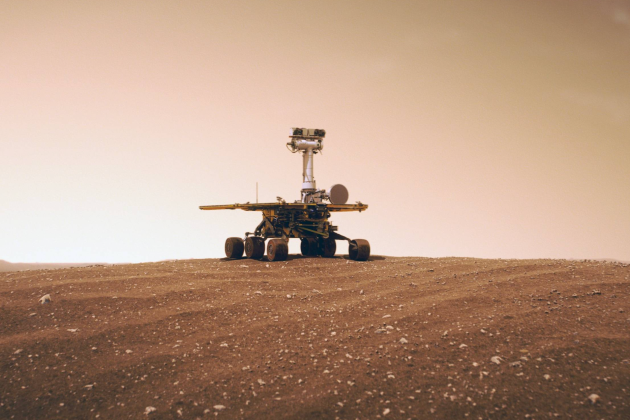How ‘Good Night Oppy’ Used Innovative VFX and Sound to Bring NASA Tale to Life
- Oops!Something went wrong.Please try again later.

In 2004, twin refrigerator-sized rovers landed on Mars to carry out exploratory missions in search of past signs of life. Neither rover was supposed to last more than 90 days, but both kept going until way past their expiration dates. Spirit rolled its wheels until May 25, 2011, while Opportunity (or “Oppy,” as it was affectionately known), lived on until June 2018.
“Lived” is perhaps the key word here, since the engineers and scientists who plotted their every move and developed emotional bonds with the rovers is the story behind the documentary “Good Night Oppy.” Director Ryan White (“Good Ol’ Freda,” “Ask Dr. Ruth”) embraced the task of bringing Mars to life in a realistic way with visual effects that had never been done before.
More from Variety
White was asked to direct “Good Night Oppy” by Steven Spielberg’s Amblin The “Good Night Oppy” team accessed NASA photo and sound archives. Entertainment on March 12, 2020, and it was a date he remembers well.
“They pitched this idea to me, and I fell in love with it right away, and then the next morning is when we got the emails saying you can’t leave your homes.”
But despite the pandemic, they moved forward, and that partnership opened all the right doors, including NASA’s.
“Once we had Amblin’s name on it, NASA said yes.” White says. “NASA trusted Amblin to make a project that was faithful to their journey.”
White had access to 217,594 black-and-white photos taken by Opportunity and 124,839 taken by Spirit on the Martian surface, as well as more than 70,000 color images taken way out in space by the Mars Reconnaissance Orbiter. When it came to animating the Martian terrain, Amblin and White turned to Industrial Light and Magic.
In spite of working on the most iconic Hollywood franchises of all time — including “Star Wars,” “Star Trek” and “Harry Potter,” not to mention films such as “Mission to Mars” and “The Martian” — ILM still found itself in uncharted territory.
“The biggest challenge for them was working on a documentary of this scale for the first time.” White says. “I know we drove them insane, because they’re not used to working with documentary filmmakers who are so steeped in reality and authenticity. We would, frame by frame, go through these shots, and if something wasn’t accurate, we would ask them to make changes.”
Despite being a documentary, White still approached “Good Night Oppy” as a feature film. “I actually wrote a screenplay, which I never do for my documentaries, but we had to, because we were creating these visual effects.”
That led to storyboarding with art department Josh Sheppard (“Her,” “Dawn of the Planet of the Apes”), which had to be done over Zoom.
White handed his storyboards off to ILM, where visual-effects supervisor Abishek Nair and his lean team of 28 found the right NASA photos and married them with CGI.
“We created these ‘animatics,’ which were just rough animations with simple temporary backgrounds, so we could get the flow going,” Nair says. “Once the animatics went in with the right camera moves, lensing and framing, we got a better picture of where things went. That’s when we started refining the details, lighting up the shots, getting a rover in there and getting the rocks scattered everywhere.”
But it wasn’t just about what Mars looked like; it was also what it sounded like. The main source for that came not from Spirit or Opportunity, but from Perseverance, a far more advanced rover that landed on Mars in February 2021.
“She had microphones, and she was sending down recordings from Mars for the first time,”
White says. From those recordings, supervising sound editor Mark Mangini — a two time Oscar-winner for his work on “Dune” and “Mad Max: Fury Road” — was able to build Mars from the ground up.
“Mangini was like a kid in a candy store. We had what dust devils sounded like, we had what a windy day sounded like, we had what a quiet day would sound like. And he was using that to create the atmosphere of Mars,” says White. “‘Good Night Oppy’ is not a sci-fi film. It’s not a fantasy film. We wanted it to be as faithful to what those robots saw as possible, because that journey is not from our imaginations; it actually happened,” he adds.
Best of Variety
Sign up for Variety’s Newsletter. For the latest news, follow us on Facebook, Twitter, and Instagram.
